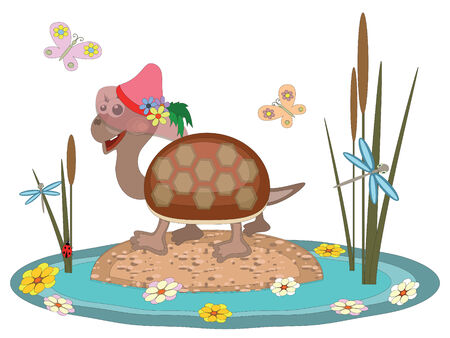Introduction to Turkish Van Cats
Meet the Turkish Van, a truly remarkable feline that has been making quite the impression across the UK. Often referred to as “the swimming cat”, this breed stands out for its unique affinity for water—an unusual trait in the cat world. Originating from the Lake Van region in Turkey, these cats are renowned not just for their adventurous spirit but also for their striking appearance and playful personalities. With their semi-longhaired coats, distinct colour markings—typically a pure white body with coloured patches on the head and tail—and captivating amber or blue eyes, Turkish Vans are hard to miss.
But what really sets them apart is more than just their looks. Unlike most cats who shy away from getting wet, Turkish Vans often leap at the chance to paddle or even swim. This rare characteristic makes them a fascinating choice for UK households seeking a companion that’s lively, intelligent, and full of surprises. If you’re curious how they compare to other breeds, here’s a quick overview:
| Trait | Turkish Van | Typical Cat Breeds |
|---|---|---|
| Water Affinity | Loves swimming & water play | Usually dislikes water |
| Coat Type | Semi-long, soft, water-resistant | Varies: short to long, not water-resistant |
| Eye Colour | Amber or blue (sometimes odd-eyed) | Wide range; odd eyes less common |
| Personality | Lively, affectionate, intelligent | Diverse; some less active or sociable |
| Origin | Lake Van region, Turkey | Diverse global origins |
This breed’s combination of beauty, brains, and boldness has quickly won over many British hearts. Whether you’re an experienced cat owner or new to feline companionship, discovering more about Turkish Vans could open up an exciting chapter in your pet journey!
2. A Brief Dive into History
The Turkish Van cat boasts a fascinating heritage that begins on the shores of Lake Van in eastern Turkey. Known for their striking appearance and unique affinity for water, these cats have a history as rich as their personalities. Their journey from the rugged landscapes of Anatolia to British homes is a tale of both adventure and adaptation.
The Origins of Turkish Van Cats
Originally found in the region surrounding Lake Van, this breed developed naturally over centuries. The Turkish Van’s distinctive semi-long, waterproof coat and robust build helped them thrive in harsh climates. Their reputation as “swimming cats” stems from local tales of them enjoying swims in the lake, a trait that continues to intrigue cat lovers today.
From Turkey to the UK
Turkish Vans first arrived in Britain during the 1950s when two British photographers, Laura Lushington and Sonia Halliday, brought a pair of kittens back after a trip to Turkey. Enthralled by the breed’s striking looks and unusual swimming behaviour, they began introducing these cats to UK breeders and enthusiasts. Over time, the Turkish Van became recognised by major feline associations in the UK, such as the Governing Council of the Cat Fancy (GCCF).
Growing Popularity Among British Pet Owners
In recent years, Turkish Van cats have gained steady popularity across Britain. Their playful nature, intelligence, and sociable temperament make them particularly appealing to families and individuals seeking an active companion. The breed’s unique relationship with water further sets it apart from other domestic cats, making it a talking point among cat owners at home and at pet shows.
Key Milestones: Turkish Van Cats’ Journey
| Year | Event | Significance in the UK |
|---|---|---|
| Ancient times | Origin at Lake Van, Turkey | Natural development of unique traits |
| 1950s | Brought to Britain by Lushington & Halliday | Introduction to British breeders |
| 1969 | GCCF recognition | Officially established as a pedigree breed in the UK |
| 2000s–present | Rising popularity among pet owners | Loved for their playful character and love of water |
The Turkish Van’s remarkable journey from ancient Anatolia to modern British households highlights not just a migration of breed but also an evolution in how we appreciate and care for our feline companions in the UK.
![]()
3. The Cat that Loves a Dip
One of the most fascinating quirks of the Turkish Van is its remarkable love for water—a trait not commonly associated with felines. Nicknamed the swimming cat, this breed stands apart from other cats in Britain, who generally prefer to keep their paws dry. Many Turkish Vans living in UK households have been observed taking a keen interest in bathtubs, sinks, garden ponds, and even puddles after a rainy British afternoon. This aquatic enthusiasm is not just anecdotal; its part of what makes the breed truly unique and endearing to cat lovers across the country.
The Turkish Van’s Favourite Watery Antics
These playful felines are known for a range of water-based antics, which often delight—and sometimes surprise—their owners. Here’s a handy table summarising some favourite watery activities:
| Antic | Description |
|---|---|
| Paddling in Sinks or Baths | Many Turkish Vans enjoy dipping their paws or even sitting in shallow water. |
| Chasing Water Streams | Lively games with running taps or garden hoses are a common sight. |
| Pond Dipping | Some adventurous cats may try to catch fish or insects near ponds. |
| Playing with Water Bowls | Spilling, splashing, and pawing at their own water bowls is frequent behaviour. |
The Swimming Cat in British Homes
As more British pet owners welcome Turkish Vans into their families, stories abound about these cats’ joyful relationship with water. It’s not unusual to hear about one jumping into the bath during a relaxing soak or entertaining guests by chasing droplets from the kitchen tap. Their curiosity and confidence around water add an extra dimension to pet ownership—making bath time less of a chore and more of an interactive game. For those ready to embrace a cat that might join them on a wild swim or simply splash about on a rainy day, the Turkish Van brings boundless fun and a touch of exotic charm right into the heart of the British home.
British Homes and Turkish Vans: A Perfect Match?
Turkish Van cats have found a special place in the hearts of many UK households. But what exactly makes this unique breed so compatible with British lifestyles? Let’s take a closer look at the reasons why Turkish Vans are thriving across the UK, considering their compatibility with typical living arrangements, local environments, and family life.
Lifestyle Compatibility
One of the main reasons Turkish Vans fit seamlessly into British homes is their adaptable nature. Whether you reside in a bustling city flat or a countryside cottage, these cats adjust remarkably well. Their sociable yet independent temperament means they’re happy to engage with busy professionals during evenings or keep themselves entertained while you’re out at work. For families who enjoy spending weekends outdoors or have active children, the playful and adventurous spirit of Turkish Vans makes them ideal companions.
Environment and Climate
The moderate British climate suits Turkish Vans perfectly. Their semi-long, water-resistant coats are well-suited for the UK’s variable weather—warm enough for chilly days but not too heavy for milder months. In addition, their love of water aligns well with British homes that feature ponds or safe garden spaces. Unlike some more delicate breeds, Turkish Vans are robust and can handle the damp conditions often found throughout the country.
Family Life and Social Dynamics
Turkish Vans are renowned for their affectionate but not overly demanding personalities. They form strong bonds with family members and often get along splendidly with children and other pets. Here’s a quick comparison of how Turkish Vans stack up against other popular cat breeds in terms of suitability for family life:
| Breed | Good with Children | Adaptable to Other Pets | Low Maintenance |
|---|---|---|---|
| Turkish Van | Yes | Yes | Moderate |
| Siamese | Yes | No (can be territorial) | Moderate |
| British Shorthair | Yes | Yes | High |
A Unique Bond in British Culture
The strong sense of community and tradition found in many parts of the UK aligns beautifully with the Turkish Van’s loyalty and interactive nature. These cats thrive on routine and shared activities—whether it’s “helping” with gardening or curling up together on a rainy afternoon. Their presence often becomes woven into daily life, making them more than just pets—they become cherished members of the family.
5. Caring for Your Turkish Van in the UK
Turkish Van cats are unique and captivating, but they also require tailored care to thrive in a British home. Let’s explore practical advice to keep your Van healthy, content, and well-groomed within the UK climate and lifestyle.
Grooming: Managing That Luxurious Coat
Unlike many long-haired breeds, Turkish Vans have a semi-long, water-resistant coat that sheds seasonally. Here’s how to keep their fur in top condition:
| Task | Frequency | UK-specific Tips |
|---|---|---|
| Brushing | 2-3 times per week | Extra brushing during spring/autumn moult; use a slicker brush for rain protection residue |
| Bathing | Occasionally (if dirty) | Their love for water makes bath time easier—use lukewarm water during colder months |
| Ear/Eye Cleaning | Monthly or as needed | Damp British weather may increase wax/dirt buildup—check regularly after outdoor play |
Feeding: A Balanced British Diet
Your Turkish Van’s active nature means they need high-quality nutrition. Opt for reputable UK brands that provide:
- A protein-rich diet to support muscle and energy levels
- Omega fatty acids for skin and coat health, especially during damp seasons
- Fresh water available at all times—Turkish Vans often enjoy playing with water bowls!
- If feeding wet food, store it safely following UK food hygiene guidelines, especially in warmer weather
Sample Feeding Plan (Adult Cat)
| Meal Time | Type of Food | Portion Guidance* |
|---|---|---|
| Morning | Dry Complete Kibble (high-protein) | 30-40g |
| Evening | Pouch of Wet Food or Fresh Cooked Meat/Fish (boneless) | 1 pouch/30-40g meat/fish |
| Treats/Enrichment Snacks | Cats’ treats or small piece of cooked chicken/fish | Sparingly; max 10% daily intake |
*Adjust portions based on weight, activity level, and vet advice.
Enrichment: Keeping a Curious Cat Content in the UK
The Turkish Van’s intelligence and playful spirit demand plenty of mental and physical stimulation. Consider these enrichment ideas suited to British homes:
- Interactive Toys: Rotating toys weekly keeps them engaged—try feather wands or puzzle feeders.
- Safe Outdoor Access: If you have a secure garden, supervised outdoor time is ideal; catios or enclosed patios are popular in the UK.
- Water Play: Encourage their natural affinity by providing shallow basins or fountains indoors (be mindful of slippery floors).
- Climbing Spaces: Multi-level cat trees near windows let them watch the ever-changing British weather—a favourite pastime!
- Boredom Busters: Hide treats around the house or introduce new scents for sensory enrichment.
A Final Word: Regular Health Checks Matter!
The British climate can be damp and chilly—regular vet check-ups ensure your Turkish Van stays healthy year-round. Annual vaccinations, routine flea/worming treatments, and dental care are key to longevity and happiness. With thoughtful grooming, proper feeding, and plenty of enrichment, your Turkish Van will make quite the splash as a cherished companion in any UK household.
6. Adopting and Finding a Turkish Van in the UK
Bringing a Turkish Van into your home is an exciting decision, but it’s important to approach adoption responsibly. Whether you’re seeking a playful companion or are drawn to their unique swimming habits, finding the right cat involves research, patience, and care.
Reputable UK Breeders and Rescue Centres
If you’ve set your heart on a pedigree Turkish Van, choosing an ethical breeder is vital. Reputable breeders prioritise health, temperament, and welfare over profit. Alternatively, rescue centres sometimes have Turkish Vans or Turkish Van crosses in need of loving homes.
Where to Find Turkish Vans
| Source | Description |
|---|---|
| GCCF Registered Breeders | The Governing Council of the Cat Fancy (GCCF) lists accredited breeders who meet high welfare standards. |
| Battersea Dogs & Cats Home | This renowned rescue occasionally has Turkish Vans or similar breeds available for adoption. |
| Cats Protection | The largest cat charity in the UK; check their database for breed-specific cats needing homes. |
| Local Breed Clubs | Turkish Van Cat Clubs often have information about upcoming litters and rescue cases. |
The Adoption Process: What to Expect
- Initial Enquiry: Contact breeders or shelters and express your interest. Be prepared to answer questions about your lifestyle and experience with cats.
- Home Visit or Interview: Many organisations will visit your home or conduct interviews to ensure a safe environment for the cat.
- Meet & Greet: Spend time interacting with the cats to assess compatibility. Remember, every Turkish Van has its own personality!
- Adoption Fee: Both breeders and rescues typically charge fees that cover vaccinations, microchipping, and initial veterinary checks.
Tips for Responsible Adoption
- Research the breed thoroughly—Turkish Vans thrive on interaction and may not suit every household.
- Avoid impulsive decisions; take time to find the right match for your family.
- If adopting from a breeder, ask to see health certificates and meet the kitten’s parents if possible.
- If adopting from a shelter, be open to considering adult cats as well as kittens.
Your Role as a New Owner
Caring for a Turkish Van means more than providing food and shelter—it’s about creating an enriching home where they can swim, play, and bond with you. By choosing responsible adoption routes, you’ll help support animal welfare in the UK while welcoming this remarkable breed into your life.


